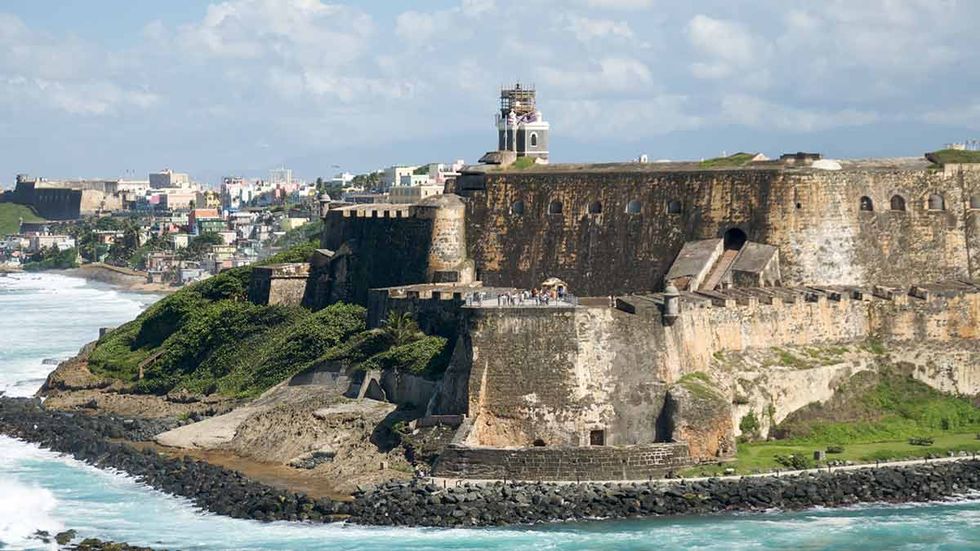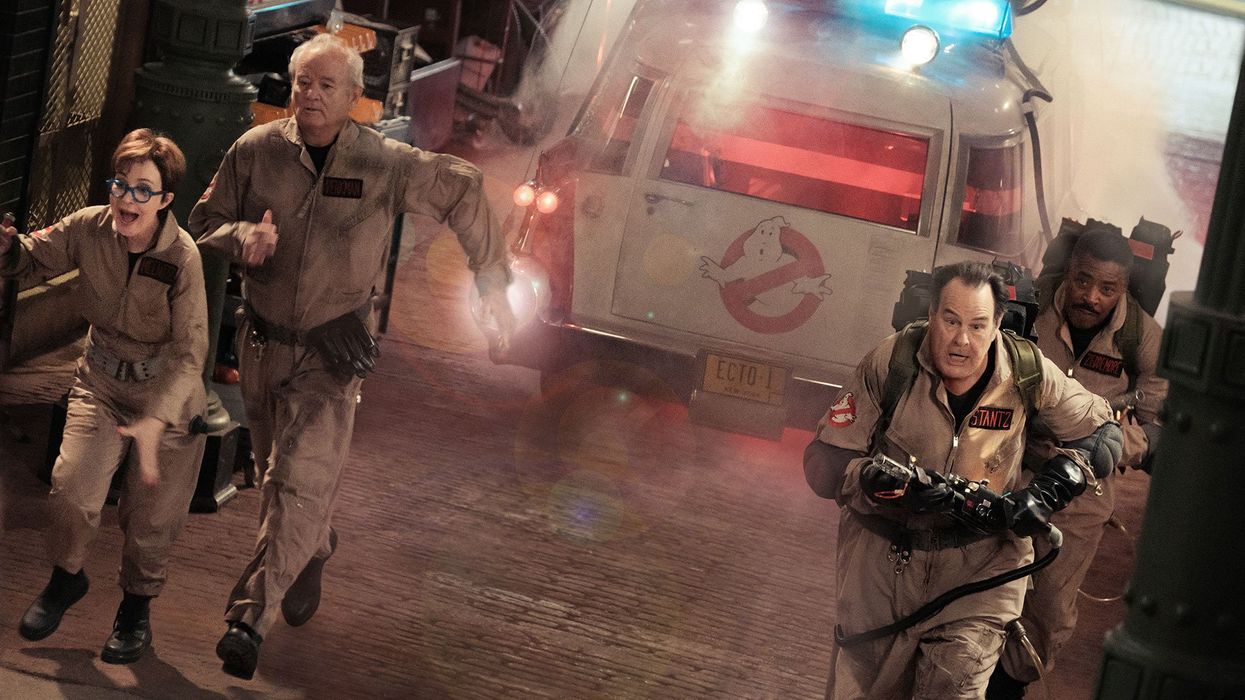
© 2024 Blaze Media LLC. All rights reserved.
$118 billion dollars in debt and pension liabilities and a lack of cash are fueling fresh fears of additional defaults in Puerto Rico. Congress has been tied in knots over the last several months, debating what role Washington should play in fixing Puerto Rico’s debt problems. Perhaps there is a role for the federal government, but Republicans have yet to find a philosophically consistent solution.
The latest iteration of the House Puerto Rico bailout bill is one example of that inconsistency.
The bill is predicated on the creation of a financial oversight board. The oversight board is a seven-member board appointed by President Obama from a list of candidates provided by Congress. This board is granted imperial control over Puerto Rico; it has total authoritarian powers to prevent the execution of legislative acts, executive orders and regulate the island’s finances; it can stymie regulations, rules and business contracts as well — all in the name of reform.
The most questionable power provided to the board is the ability to restructure the island’s debt without the consent of its creditors. In other words, if the board can’t find common ground on a path forward among the island’s lenders, the board has the right to unilaterally force payment cuts upon the creditors. (In the latest version, creditors will be able to challenge any decisions in court.) This is known as a “cram-down,” and is likely a violation of the Constitution.
The question regarding the constitutionality of the “cram-down” revolves around whether states and territories should be able to utilize the bankruptcy protections provided for in U.S. law. This is not settled law, and has been litigated before the Supreme Court.
The Supreme Court determined in U.S. Trust Co. v. New Jersey (1977) that it is unconstitutional for a state or territory to declare bankruptcy, or to otherwise renege on a contractual obligation. Article 1, Section 10, Clause 1 of the Constitution states: No state shall… pass any Bill of Attainder, ex post facto law, or law impairing the obligation of contracts.
This current bill before the House violates constitutional norms by adopting bankruptcy provisions, but calling them by another name. The reason Congress feels the need to find a constitutional work-around is obvious. But just as obvious is the better, more constitutional, solution: simply allow Puerto Rico to default.
Yes, I said it. Although Puerto Rico declaring an outright default seems extreme, it’s not. Here’s why.
Puerto Rico Will Default – One Way or Another
More than 45 percent of Puerto Rico’s population is in poverty; unemployment hovers above 10 percent and nearly 35 percent of the island is on food stamps. The writing is on the wall: Puerto Rico will never be able to repay its debts. To put this into perspective, the median household income in Puerto Rico is $36,000. Yet, the amount of Puerto Rican debt per household is $80,000.
The oversight board’s power to coerce creditors into a debt restructuring deal is not a last resort; it will be a necessity under this scheme. Regardless of what reforms are enacted, the board will never be able to fully solve the debt issue.
Therefore, Puerto Rico will technically default with or without an oversight board. If the board decides to unilaterally cut repayments to bondholders, that will likely be deemed by the markets as a partial default. Kenneth Rogoff and Carmen Reinhart are both debt experts, and in their famous book, “This Time is Different,” they write:
In practice, most defaults end up being partial, not complete, albeit sometimes after long negotiations and much acrimony. Creditors may not have the leverage to enforce full repayment, but they typically do have enough leverage to get at least something back, often a significant share of what they are owed.
Rogoff and Reinhart go on to highlight some of the most famous national defaults, like Russia’s Bolshevick government’s refusal to pay Tsarist debts in 1918, “when Russia finally re-entered the debt markets sixty-nine years later, it had to negotiate a token payment on its defaulted debt.”
In most sovereign defaults, creditors are often able to negotiate the terms of partial payment. Whereas in Congress’ proposal for Puerto Rico, a group of seven politicians will ultimately have the final say over the terms of any deal. The House bill hijacks the lenders’ ability to leverage their rights on any final terms. Even though the oversight board is tasked with preserving a solution for Puerto Rico to access the credit markets in the future, it’s entirely possible for this solution to backfire, making that even more complicated.
In the end, Puerto Rico must face the consequences for its irresponsible and reckless fiscal choices. So too must the creditors, who were too willing to lend to an island that was clearly overextended and in financial trouble. But the consequences should play out through the free market.
Default is One Reaction to a Bad Problem – But It Has Worked
The default option is less extreme than many believe. In fact, 2014 is a perfect anecdote to demonstrate what the free market can accomplish. As I wrote in March:
In 2014, Puerto Rico’s largest debt holder, the Puerto Rico Electric Power Authority (PREPA) failed to make payments on its $9 billion in debt. Instead of resorting to litigation and settlements in court, the bondholders decided to work with the utility to restructure the debt, implement business reforms, and provide a new source of capital to the outdated and inefficient utility. The result was a 15 percent reduction in the value of the old bonds, a longer payment schedule and even lower interest rates — plus hundreds of millions of dollars in new loans!
Even the New York Times hailed it as a model for the rest of the island’s debt-ridden government.
The better question for the federal government involves reforming Puerto Rico. The federal government can institute a number of economic changes to make financial life easier on the island, including repealing the Jones Act. But the larger question is whether reforms in Puerto Rico should be addressed and facilitated by the residents and their elected officials, or by an imperial board created by Washington. My first instincts are to assume that the corrupt system that now plagues Puerto Rico cannot fix itself; an outside group needs to take control.
And there is some merit to that argument.
But perhaps that theory weakens the rights and abilities of states and territories to self-govern; and we should always give pause when our nation’s central government seeks to seize control of any of our democratic functions, at any level.
Even Puerto Ricans are less than enthusiastic about Washington bureaucrats pulling authoritarian rank over their island. A New York Times article quoted President of the Puerto Rican Senate Eduardo Bhatia, suggesting an oversight board was deeply offensive; a reminder of “the 18th century” evoking “the worst colonial subjugations.”
That’s no small thing. In the end, Puerto Rico needs to take the initiative to solve its own problems; the populace needs to weed out the elected officials that have added to the island’s problem. The country is in a position to default on their debt — and Washington must let that failure commence in a free market way.
Unlike many nations that have defaulted throughout history, Puerto Rico won’t follow their trends. The nation will still have the U.S. mainland as a safety net; it will continue to receive assistance, welfare and other means of support, just as states do now.
It’s time to channel Ronald Reagan, as he once uttered, “The nine most terrifying words in the English language are: I’m from the government and I’m here to help.”
Perhaps the federal government will only make things worse; perhaps the responsibility of rebuilding and renewing Puerto Rico is for the people of the island.
Want to keep up with what's going on in Washington without the liberal media slant, establishment spin, and politician-ese?
Sign up to get CRTV’s Capitol Hill Brief in your inbox every evening! It’s free!
John Gray is a Senior Editor at Conservative Review. Follow him on Twitter @JohnW_Gray.
Want to leave a tip?
We answer to you. Help keep our content free of advertisers and big tech censorship by leaving a tip today.
Want to join the conversation?
Already a subscriber?
more stories
Sign up for the Blaze newsletter
By signing up, you agree to our Privacy Policy and Terms of Use, and agree to receive content that may sometimes include advertisements. You may opt out at any time.
© 2024 Blaze Media LLC. All rights reserved.
Get the stories that matter most delivered directly to your inbox.
By signing up, you agree to our Privacy Policy and Terms of Use, and agree to receive content that may sometimes include advertisements. You may opt out at any time.


